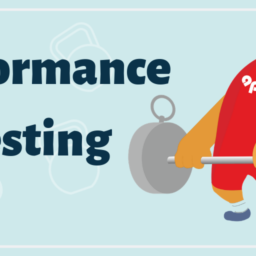Users around the world expect software applications to do anything and everything. Whether it is online shopping, banking transactions or getting medical treatments online, everything is digital. With so much going on in the digital world, user expectations from software companies are increasing exponentially. These companies evolve with all the other digital transformations in different industries making performance testing an important part of their software testing process.
Performance Testing – An Integral Part of an SDLC
Performance testing is an integral part of any software development lifecycle (SDLC). It includes load, stress and soak testing, where the main purpose is to identify performance bottlenecks under various loads. In short, it is a diagnostic process to identify and attend to the performance issues within a system. An independent software testing company provides performance testing services to ensure the application is working as it is expected to under certain loads. For instance, during a Black Friday sale, an online retail store should be able to cater to as many users as expected. So here performance testing plays an important role as it is not possible to estimate how many potential buyers would be accessing the online store during the sale.
Why Performance Tests at an Early Stage?
In an agile methodology, it is recommended to test apps for performance so that the app server performance, network performance, database performance, etc. are tested way before the app moves to the production. Testers check all these parameters while testing as per the expected load. It reduces the cost associated with risks in identifying and resolving performance issues during the implementation phase. Load testing can be immediately executed after the web pages start functioning. When you opt for performance testing services, the vendor defines the entire scope of performance testing.
Performance Testing Best Practices
The performance of an app depends on the purpose for which it is being developed. For example, an online store is used to purchase items easily, but if the website crashes in the middle and customers are unable to complete their transactions, there is an issue in its performance. Users tend to uninstall poor-performing apps within a few seconds when they are unable to operate the app due to glitches or delays. Following are a few best practices for devising the best performance testing strategy:
- Scripting – Scripting is the most important factor since it defines the interaction between the customer and the app’s behavior. It simulates different features of the app with respect to its performance.
- Choosing Testing Tools – One of the most important factors when it comes to software testing is choosing the right software testing tools. The test performance of the usability of the app is important.
- Evaluating Cost-Benefits- Before beginning any software development process its cost benefits should be evaluated. Similarly before beginning a performance test its cost analysis should b done.
Performance testing services aim at improving an app’s performance and quality. Performance testing is designed to check an app’s behavior under different loads. Getting performance tests right at early stages in SDLC saves time, effort and money.



